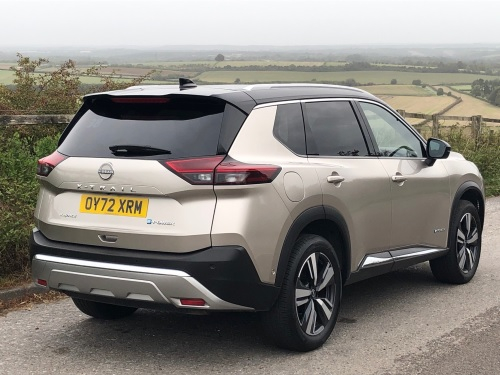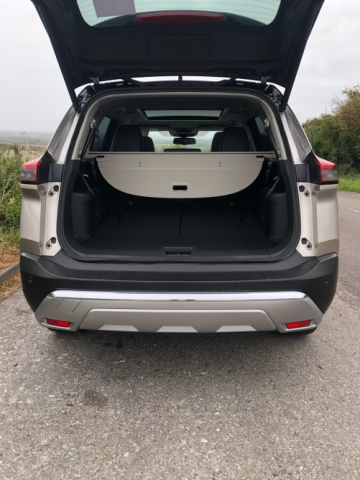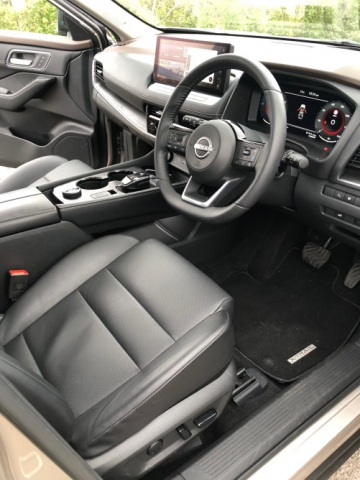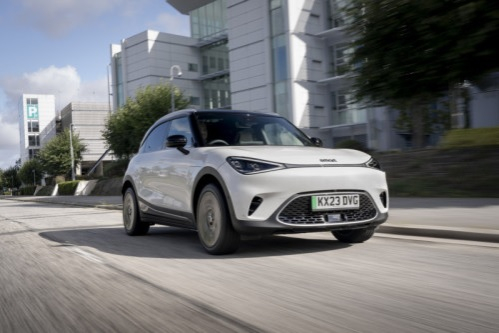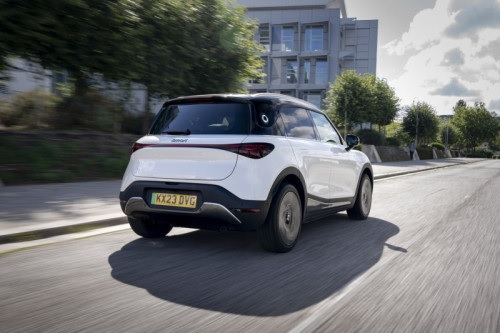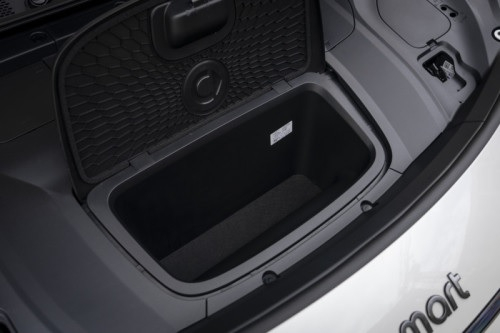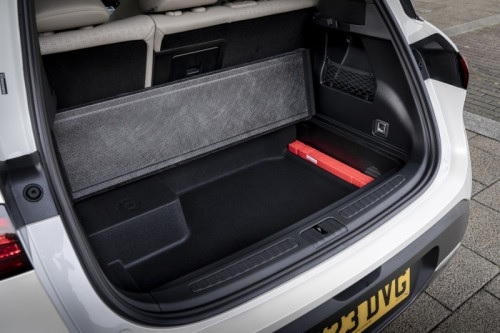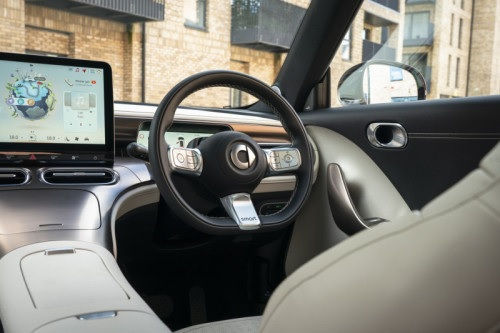LITTLE AND LARGE NEW MODELS PUT THROUGH THEIR PACES AT A RECENT INDUSTRY SMMT TEST DAY
More and more new names are appearing in the UK new car market as it evolves into the electric age, but at the recent Society of Motor Manufacturers and Traders annual southern test day for writers near Basingstoke it was two familiar names which caught my attention.
The Nissan X-Trail has been a success in Britain for over 23 years while the smart brand has been hanging around for even longer with a succession of owners before Daimler-Benz acquired it in the mid-90s.
With widely different back stories and appealing to opposite sectors of the market, they are now embracing the electric age so needed a short test to bring us up to date.
NISSAN X-TRAIL
The Nissan X-Trail has been with us since 2000 through four generations and a number of powertrain changes while maintaining its 4WD pedigree.
Just last week the Nissan X-Trail e-POWER with e-4ORCE was recognised by The Sun, The Sunday Times and driving.co.uk in the News UK motoring awards by picking up the title of News UK Family Car of the Year.
It’s a little known fact that very early on in its model series, Nissan brought out a fuel cell version in 2003 for sale to businesses which had access to hydrogen but this was discontinued for a number of reasons, mostly its cost and refuelling network.
Nissan’s work and lessons learned with the X-Trail FCEV were fundamental with battery powertrains before it launched the compact five-door LEAF in 2010 and encouraged the company to go down this road into the SUV sector and a successor to the current LEAF will be made with this in mind.
The Nissan Ariya series is the latest all battery model but for many today it is more practical to have a hybrid powertrain using a conventional internal combustion engine in conjunction with a traction battery and the X-Trail does a very good job at bridging the technology gap.
The Nissan X-Trail Tekna e-Power, e-4orce is the culmination of this knowledge and a large seven-seat SUV. Our Tekna version cost £47,995 with two-tone paint option.
It utilises a three-cylinder 1.5 litre petrol engine as a generator for the battery and twin electric motors respectively driving front and rear wheels with an onboard computer and traction controls working seamlessly for the driver.
Nissan has really pulled out the stops with the technical specification and while it still emits 152gkm and misses out on the pure battery tax concession it is a very sophisticated and capable soft-roader for our wintry roads and mild off-road work where only its ground clearance restricts progress.
The interior is an eye-catching masterpiece of smooth surfaces, integrated switches and displays which would not be out of place in a much more expensive premium brand. Its value-for-money approach does not cut corners on its ability to deliver good performance across a wide range, with strong and smooth acceleration, a very good ride and excellent seats throughout.
The front struts and rear multi-link suspension soaked up bumps and bad surfaces but the road noise did intrude more than the petrol engine and silent transmission. On winding roads it stuck down and there was slight body roll but the steering and brakes were excellent.
Room was very good for five, a little short of legroom when the rearmost third row was tested but the bootspace was easy to load and a good size from 485 to 1298 litres.
Not only was it roomy but allowed excellent visibility all round with large windows, a low waistline and big wipers both ends.
With 213ps output with engine and motors at your disposal the acceleration was very respectable, 0-62mph coming up in 7.2 seconds and a maximum where permitted of 111mph.. Overall we saw an indicated 42mpg, admittedly after a comparatively short journey on country roads without much urban traffic.
So the Nissan X-Trail came of age last year in Britain and the e-Power, e-4orce shows it has matured and is still one of the best all-round capable 4WD SUVs you can buy.
THE SMART BRAND HAS JUST BECOME SMARTER
It’s over twenty years since the smart brand launched in Britain as a modern micro-car and a lot has changed.
The initial two-seater version with a small petrol engine has been joined by a compact five-door model with pure electric powertrain and a potentially bigger market in its headlights.
Last April, the new smart #1 arrived and could be specified and ordered on-line in addition to the traditional dealerships from £35,950 for the Pro+, £38,950 for the better equipped quicker charging Premium and sporty Brabus cost from £43,450 with twin motors for all-wheel-drive giving 315kW and 0-62mph in 3.9 seconds.
Produced as a joint venture between Mercedes-Benz and China’s Geely group, who own Lotus, Volvo, Polestar and London Electric Vehicle Company (black cabs), the blend of German design and engineering has met Chinese production in a new factory set up for the production of smart cars. Geely is also the major shareholder in MB parent Daimler, so they are very entwined in engineering and technology.
Our test drive mid-range Premium model uses a single 200kW motor driving the rear wheels and has a 0-62mph time of 6.7 secs with a potential range of 273 miles, the most of the three models, and recharges in three hours from 10 to 80% capacity.
Standing in a line among most new hatchbacks, the smart #1 really does catch your eyes with its very smooth flowing body lines which also aid aerodynamics, reduce drag and improve range and efficiency.
So long as the driver has the starter fob in their possession the car will recognise the user and all that’s required is to simply engage drive and move off. No key, no fuss.
The seats were comfortable and hugging around the back but taller users in front might find the under-thigh support to be lacking. It had good leg and headroom.
At 411 to 976 litres, the bootspace was about average for the class while the oddments room inside was very good throughout.
The motor was very responsive and a 0-62mph time of 6.7 secs is claimed. It certainly felt very brisk with a nice balance to the steering and strong brakes underfoot.
It would be ideal in urban areas with its compact dimensions of 4.27m long and 1.82m wide, easy high geared steering and good sightlines. A driver can choose three modes to maximise economy, comfort or sport potential.
Road noise was intrusive and the suspension felt firm for a family car and I’m not sure I would want to undertake a long journey in the car so would probably welcome a break when the charge ran out at about 270 miles.
smart #1 is a big advance over the original smaller ForTwo, the previous ForFour model and it is right up there with other BEV rivals while turning heads with its looks. It also comes with a good three years unlimited mileage vehicle warranty and eight years or 125,000 miles cover for the battery pack.
CONCLUSION
In today’s ev market, longevity is a crucial component and the Nissan X-Trail and smart #1 can teach some old dogs new tricks. By Robin Roberts Miles Better News Agency

